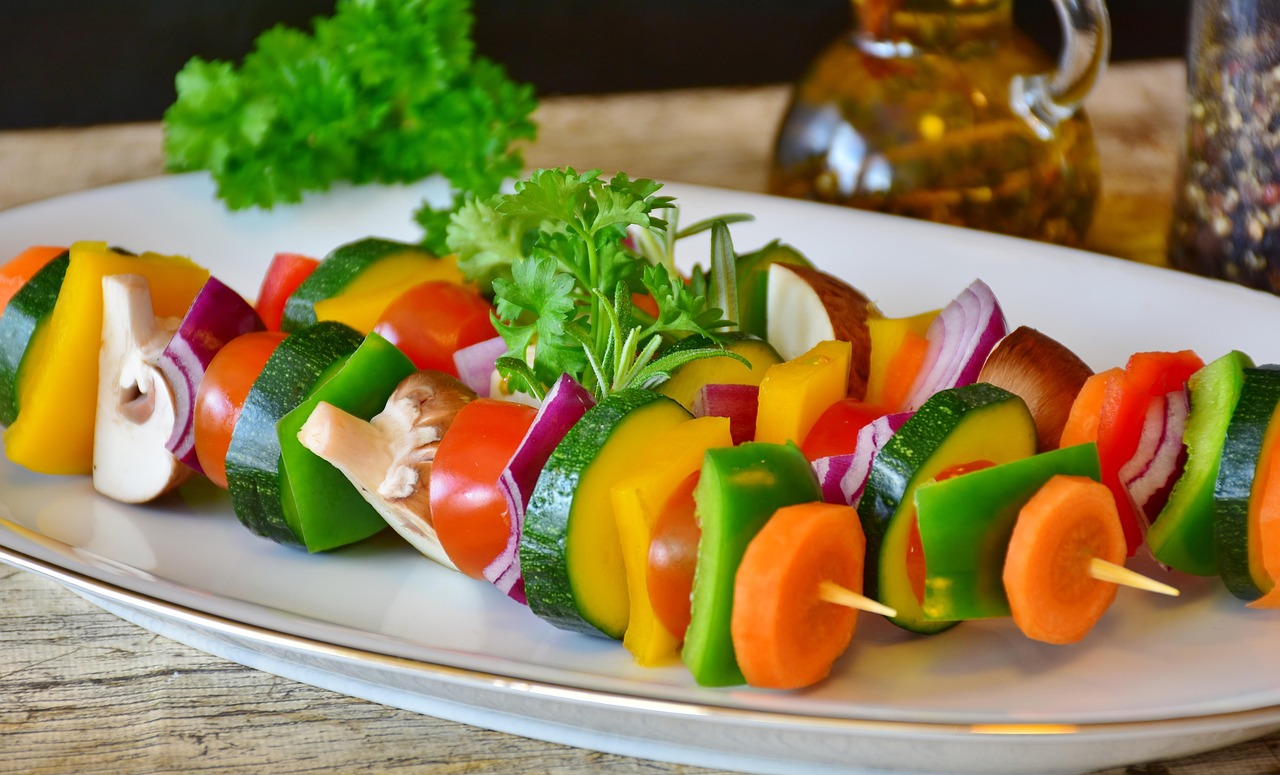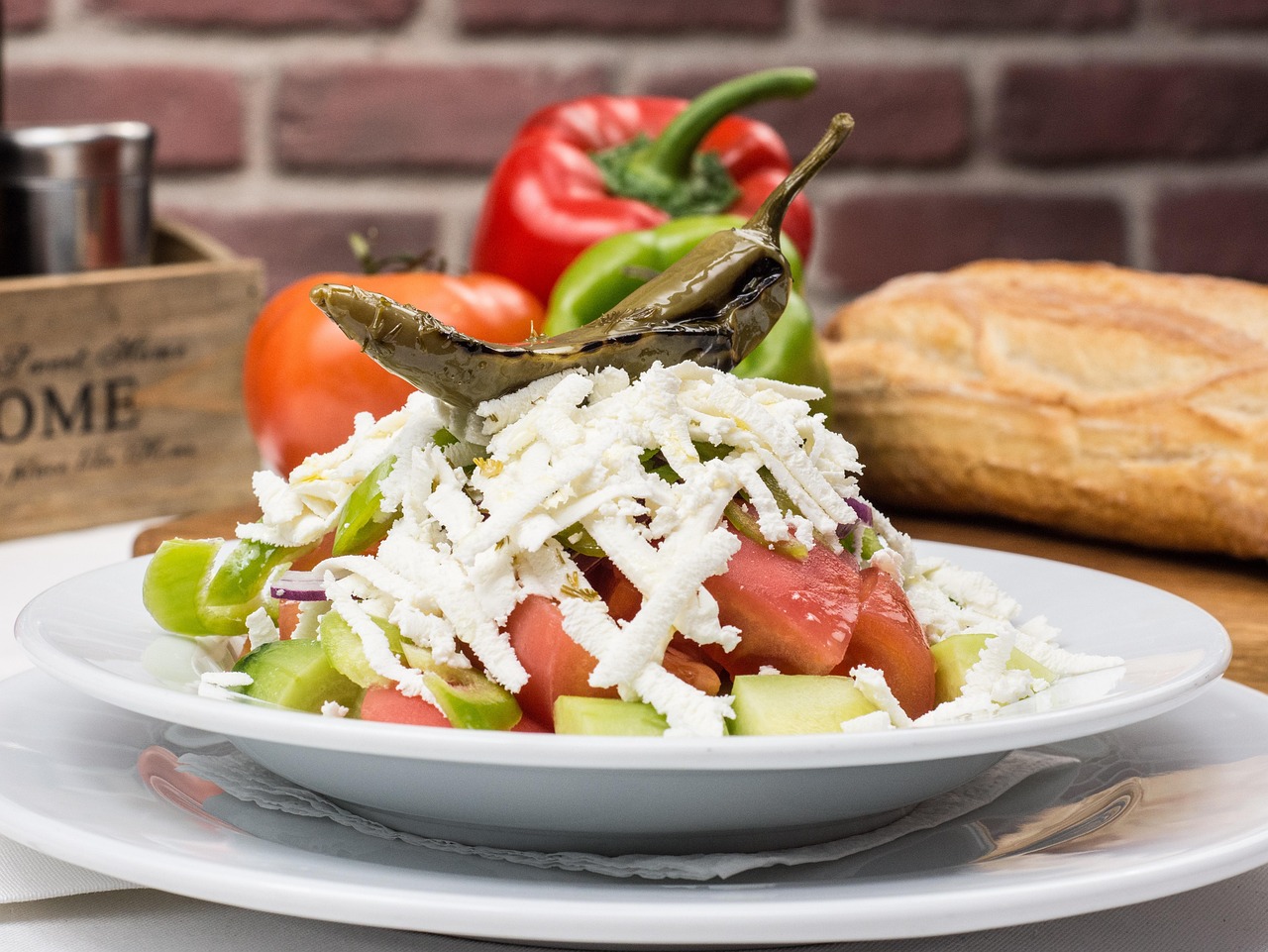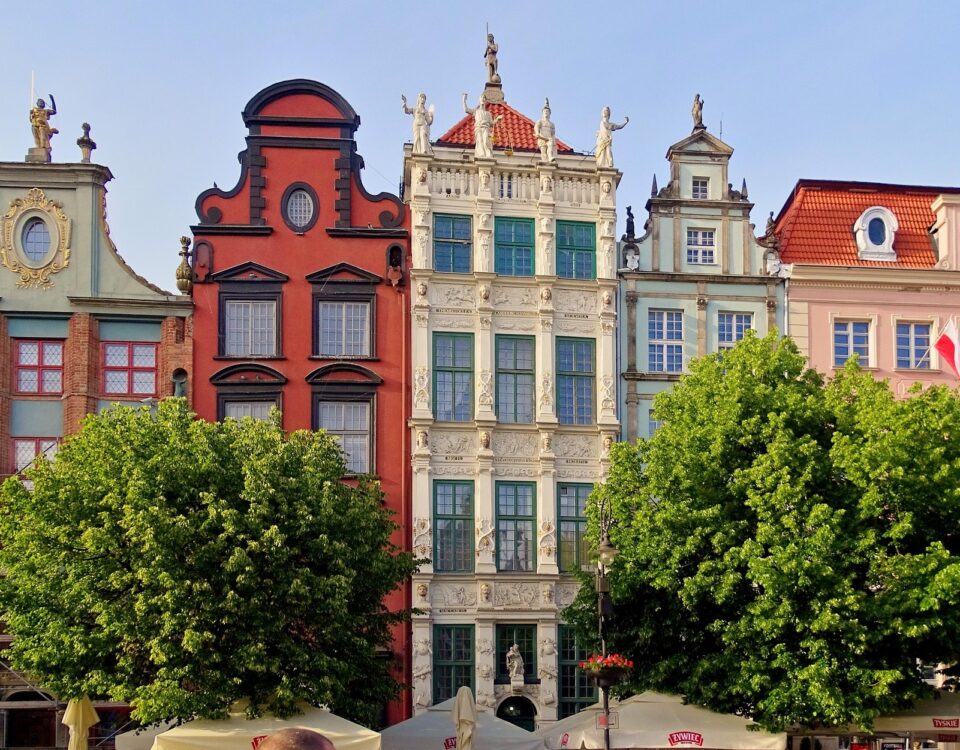
Traditional Eastern European Street Food You Must Try in 2025 | TripToEast Guide
2025-10-14
Eastern European Food Travel: Pierogi – Poland’s Iconic Dumplings
2025-10-20🌿Top 10 Vegetarian Dishes in Eastern Europe
Taste the Timeless, Meat-Free Flavors of the East
Vegetarian Dishes in Eastern Europe are a delicious surprise for any traveler. While the region is often known for hearty stews and meaty feasts, beyond that reputation lies a hidden world of meat-free treasures — dishes that have nourished families for centuries, crafted with love, resourcefulness, and deep respect for the land Stay with TripToEast
Start exploring now 👉 Eastern European Food Culture:Traditional Flavors and Recipes | Ultimate 2025 Guide

1. Pierogi (Poland)
Pierogi are Poland’s most beloved culinary symbol. These soft, crescent-shaped dumplings are stuffed with a variety of fillings — the most famous being potato and cheese (Pierogi Ruskie). Other vegetarian versions include mushroom and cabbage or sweet fruit fillings like blueberries and cherries.
Boiled or pan-fried to golden perfection, pierogi are typically served with sour cream, melted butter, and caramelized onions, creating a creamy, savory balance. You’ll find them in every Polish household, street market, and traditional restaurant — a warm, comforting bite of Polish hospitality.
Taste tip: Try them fried for a crispy edge and topped with sautéed onions.
Start exploring now 👉https://triptoeast.com/traditional-eastern-european-street-food/

🍲2. Borscht (Ukraine / Russia)
Few dishes capture the soul of Eastern European cuisine like Borscht — the deep-red, beet-based soup that’s both earthy and vibrant. The vegetarian version skips the meat stock but remains rich in flavor thanks to slow-cooked beets, cabbage, carrots, potatoes, onions, and dill.
Traditionally, borscht is served hot with a swirl of sour cream and fresh herbs, though in summer, a chilled version called Chłodnik is equally refreshing. It’s a dish that reflects the heart of Slavic comfort cooking — nourishing, humble, and full of life.
Fun fact: Every family has its own secret borscht recipe, passed down through generations.
Start exploring now 👉https://en.wikipedia.org/wiki/Borscht
🌽3. Mămăligă (Romania & Moldova)
Mămăligă is the soul of Romanian peasant cuisine — a golden, creamy cornmeal porridge often compared to Italian polenta. It’s simple but deeply satisfying, made by slowly cooking cornmeal with water and salt until it reaches a smooth, hearty texture.
Served with feta-style cheese, sour cream, or fried eggs, mămăligă is a staple in every rural Romanian household. In mountain regions, it’s often paired with sautéed mushrooms or roasted vegetables, creating a rustic vegetarian feast.
Cultural note: In Romania, mămăligă isn’t just food — it’s tradition. It often replaces bread at the family table.
Start exploring now 👉Ultimate Eastern Europe travel guide | 2025 Edition + Facts
4. Shopska Salad (Bulgaria)
Light, fresh, and colorful, Shopska Salad represents the bright side of Bulgarian vegetarian food. It’s made from a simple yet vibrant mix of ripe tomatoes, cucumbers, roasted peppers, onions, and grated white cheese (Sirene).
Drizzled with olive oil or sunflower oil, this salad offers a perfect balance of sweet, salty, and tangy flavors — a refreshing contrast to the region’s typically hearty dishes.
Did you know? The red, green, and white colors of the salad mirror the Bulgarian flag — a true symbol of national pride.

Keyword focus: Bulgarian cuisine, Shopska salad, Eastern European vegetarian salad
🍞5. Kasha (Russia, Ukraine, Belarus)
Kasha is one of the most traditional and ancient Slavic vegetarian dishes — a warm, nutty buckwheat porridge that embodies simplicity and nourishment. Eaten for breakfast, lunch, or dinner, kasha can be sweet or savory depending on the preparation.
The savory version is cooked with mushrooms, onions, and butter, offering a comforting, earthy flavor that keeps you full for hours. The sweet version may include honey, milk, or berries.
Health highlight: Naturally gluten-free and rich in protein and fiber, kasha is a perfect example of Eastern Europe’s wholesome nutrition
6. Banitsa (Bulgaria)
A Bulgarian classic, Banitsa is a flaky, golden phyllo pastry filled with eggs, yogurt, and white cheese. While meat-filled versions exist, the vegetarian Banitsa — rich, cheesy, and slightly tangy — remains the country’s favorite breakfast.
Baked until crisp on the outside and soft inside, Banitsa is often enjoyed with ayran (a yogurt-based drink) or a cup of strong black coffee. In Bulgarian homes, it’s a must-have during holidays and New Year celebrations, symbolizing prosperity.
Pro tip: Try Spinach Banitsa for a green, nutritious twist.
Start exploring now 👉

🍄7. Mushroom Paprikash (Hungary)
When it comes to Hungarian vegetarian cuisine, Mushroom Paprikash is the undisputed star. A vegetarian adaptation of the classic chicken paprikash, this dish replaces meat with fresh mushrooms simmered in a paprika-infused cream sauce.
The result is smoky, rich, and velvety — served traditionally with nokedli (Hungarian dumplings) or soft bread. The magic ingredient? Sweet Hungarian paprika, which gives the dish its signature color and aroma.
Local tradition: In Hungary, paprika is more than a spice — it’s a national symbol and flavor cornerstone.
8. Cabbage Rolls with Rice (Sarmale – Romania, Serbia, Ukraine)
Sarmale, or stuffed cabbage rolls, are one of the most iconic dishes across the Balkans and Eastern Europe. While they’re often made with meat, the vegetarian version is a cherished alternative — especially during Lent or fasting periods.
Cabbage leaves are filled with rice, carrots, onions, and herbs, then slow-cooked in tomato sauce until tender and flavorful. Each bite combines the tang of cabbage with the heartiness of rice, creating a perfectly balanced comfort meal.
Cultural note: In many Eastern Orthodox homes, vegetarian sarmale is a spiritual and family tradition during holidays.

9. Plăcintă cu Brânză (Romania & Moldova)
Plăcintă cu Brânză is a delightful cheese-filled pastry that’s both savory and satisfying. Made from soft dough and stuffed with fresh cheese (brânză), dill, or potatoes, it’s baked or fried to golden perfection.
In Moldova and Romania, you’ll find Plăcintă in every bakery — eaten hot as a street snack or during family gatherings. Sweet versions filled with cottage cheese and raisins are equally popular.
Tip: Pair it with herbal tea for an authentic Eastern European afternoon treat.
🍯10. Medovik (Russia)
To end on a sweet note, meet Medovik, the legendary Russian honey cake. This elegant dessert features multiple thin layers of honey-flavored sponge and creamy filling, creating a moist, caramel-like texture.
Its light sweetness and subtle aroma of honey make it irresistible. Served chilled and often garnished with crushed crumbs or walnuts, Medovik represents the gentle, comforting side of Eastern European desserts.
Best with: A cup of strong Russian tea or black coffee.
Why Eastern Europe Is a Paradise for Vegetarians
Eastern Europe’s vegetarian cuisine stands out because of its:
-
Seasonal ingredients: Locally grown vegetables, grains, and herbs used year-round.
-
Cultural roots: Many vegetarian dishes originated from fasting traditions and rural lifestyles.
-
Rich flavors: Even simple meals are layered with cream, dill, garlic, and paprika for depth.
Whether you’re exploring Polish pierogi, Hungarian paprika stews, or Bulgarian salads, every meal tells a story — one of history, faith, and connection to the earth.

Polish pierogi, Hungarian paprika stews, or Bulgarian salads
Travel Tips for Vegetarian Food Lovers
-
Learn local phrases: Say “bez myasa” (without meat) in Russian or “bez mięsa” in Polish when ordering.
-
Visit traditional markets: You’ll discover fresh produce, cheeses, and homemade pickles.
-
Try Orthodox fasting menus: During Lent, restaurants serve creative vegetarian dishes.
-
Join local cooking classes: Experience the warmth of Eastern European hospitality firsthand.
✨Final Thoughts
Vegetarian food in Eastern Europe is a celebration of simplicity and comfort — where humble ingredients turn into rich, soulful dishes. From cheese-filled pastries in Bulgaria to spiced mushroom stews in Hungary, every bite connects you to the region’s history and heart.
Traveling through Eastern Europe as a vegetarian isn’t just possible — it’s a flavorful, cultural adventure. So grab your fork, embrace the aroma of paprika and dill, and discover the meat-free magic of the East — one delicious plate at a time.





